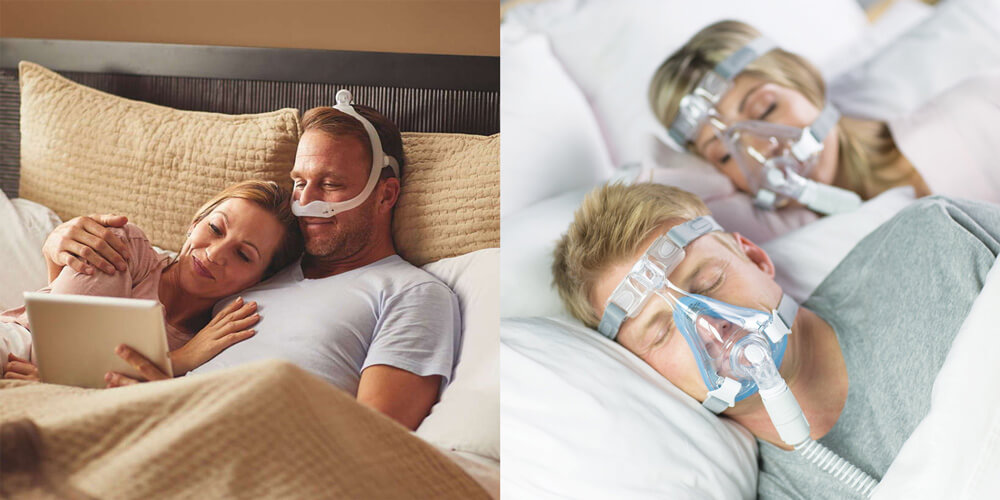Sleep apnea can affect anyone regardless of gender, but it’s most prevalent in older men. In fact, one in four men in Australia over the age of 30 is diagnosed with this debilitation sleep disorder. But it’s entirely possible that this figure is larger due to the high volume of unreported cases of this condition.
If you have trouble sleeping through the night or have already been diagnosed with sleep apnea, then it’s critical to know what to consider when choosing a CPAP mask. This tool can make all the difference in transforming your restless, tossing-and-turning sleep into a restful, undisturbed one.
So if you’re looking for the right CPAP mask, here are five quick tips to help you pick your new, trusty sleeping aid.
1. Determine the Severity of Your Condition
The moment you start to feel that you’re having difficulty sleeping through the night or you’ve been experiencing excessive snoring, it’s advised to get checked for sleep apnea.
The degrees of sleep apnea can range from mild to severe. If your doctor has already assessed the severity of your condition, then it should have been noted in your medical records. Here’s a breakdown of the severity threshold for each condition.
- Mild sleep apnea: 5 to 14 breathing pauses per hour
- Moderate sleep apnea: 15 to 30 breathing pauses per hour
- Severe sleep apnea: More than 30 breathing pauses per hour
By getting a diagnosis from your doctor, you’ll be able to get a professional medical opinion on the severity of your condition. And from this evaluation, you may also be prescribed a specific CPAP mask that’s best suited to your needs.
2. Familiarize Yourself with CPAP Mask Options
Even if your doctor has cleared you to use a certain CPAP mask, it’s still possible that the mask may not be suitable for your unique face shape. That’s why it’s important to familiarize yourself with the available CPAP mask options.
The most common CPAP masks are nasal pillows, nasal, and full-face covers. Each type is built specifically to fit the needs of the patient and to provide you with optimal comfort.
- Nasal pillow CPAP mask: This CPAP mask surrounds and cradles the insides of the nostril’s passages with two small pillow cushions.
- Nasal CPAP mask: This CPAP mask covers the nose (from the bridge to the upper lip) and is suitable for people who move when they sleep.
- Full-face CPAP mask: This CPAP mask covers both the nose and mouth and is suitable for people who tend to breathe out of their mouth.
There are a lot more types of CPAP masks available in the market, so make sure to do your research and familiarize yourself with all of the options before making the final call.
3. Consider Your Face Shape
Face shape can vary greatly from person to person. You can’t just follow one person’s recommendation and expect that the mask will work just as effectively for your face shape.
That’s why it’s important to pay attention to the distinct measurements of your face. Some of the things you should measure when determining a custom fit for you include:
- Nose width and length
- Head size and shape
- Facial hair
- Dentures and teeth formula
- Main mode of breathing (through your mouth or nose)
It’s also important to consider how often you move around in your sleep. If you frequently move around, it’s best to use an adjustable CPAP mask that will adjust with you while still ensuring a snug fit and adequate airflow.
4. Identify Your Primary Sleeping Position
Are you a side sleeper, a back sleeper, or a stomach sleeper? Believe it or not, your primary sleeping position can dictate your ideal CPAP mask.
For instance, if you sleep on your side, then you’ll want to ensure that your mask has a firm grip on your nose to prevent it from shifting around and creating a leak. Either a nasal mask or nasal pillow mask is a good choice for side sleepers.
The same holds true for stomach sleepers. A nasal pillow mask is preferable to prevent any dislocation of the mask while you sleep. However, some full-faced mask designs are made to accommodate people who sleep on their stomachs, so check in with your doctor to find the best option.
On the other hand, back sleepers can get away with choosing any type of mask since most CPAP masks are designed for them. So if you are a back sleeper, you have a lot of options.
5. Use The Right Accessories
When weighing your options, don’t just consider the CPAP mask as a standalone product. Think about the other products that go with it too. This could be anything from straps and headgear to the equipment that powers the CPAP mask.
When selecting accessories, seek out adjustable and comfortable products made out of durable and high-quality material. Plastic and silicone are deemed excellent choices by many. The headgear should also be snug, tight, and comfortable enough for you to sleep in.
As for the CPAP machine, ensure that you secure one with the features and settings that you’d find yourself using from time to time. Many machines are also only suitable for a single mask type, so be sure to find one that’s compatible with the mask you need.
You may also opt for machines that are compatible with all types of masks like the F&P Sleepstyle. An all-inclusive machine helps make choosing the right CPAP mask for your health needs a much easier and stress-free endeavor.

